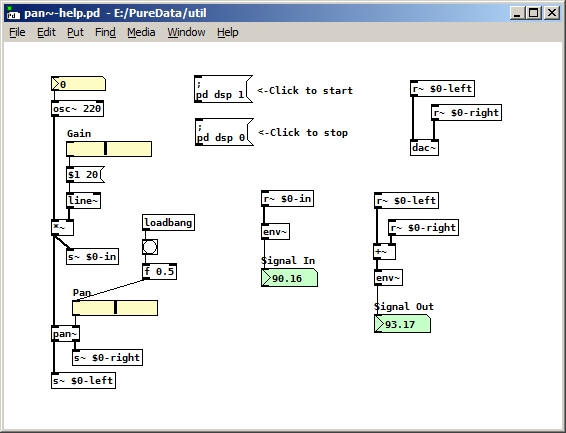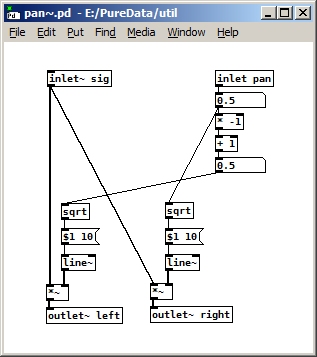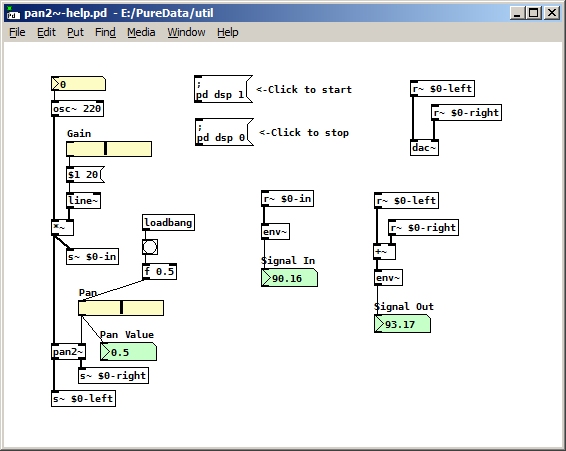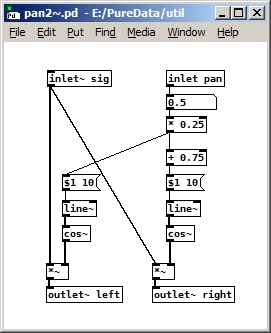Which is the "correct" way to implement equal power panning, using square roots or cosines? After doing some googling, I found posts recommending both methods. And which would be more efficient, if they're both "correct"? I've tried both and they both sound the same to me, and seem to give the same results, as far as I can tell. I compared the output from [env~] of the input signal with the summed output signals (left and right), and didn't see any difference. When panned near the middle, the RMS of the output signal is a little higher than the input signal, using either method (see screen prints below). But that may be due to the way [env~] calculates RMS, I don't know.
Here are my two implementations, [pan~] using the square root method and [pan2~] using the cosine method.





 my friend has used VBAP (vector based amplitude panning) which I've never been able to understand fully. For mono signals panned into headphone mixes I've used Ambisonics in order to avoid having the sound in only one ear when panned to the extreme left or right, which sounds bad to me. IEM has a great VST Ambisonics library. But if you're worried about the relative computational cost of cos vs sqrt, you should run away from Ambisonics as fast as you can.
my friend has used VBAP (vector based amplitude panning) which I've never been able to understand fully. For mono signals panned into headphone mixes I've used Ambisonics in order to avoid having the sound in only one ear when panned to the extreme left or right, which sounds bad to me. IEM has a great VST Ambisonics library. But if you're worried about the relative computational cost of cos vs sqrt, you should run away from Ambisonics as fast as you can.